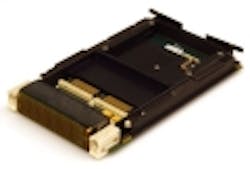mPhase Technologies Signs three-year CRADA with U.S. Army
LITTLE FALLS, N.J., 10 Feb. 2011. mPhase Technologies Inc. has signed a three-year Cooperative Research and Development Agreement (CRADA) with the U.S. Army Armament Research, Development, and Engineering Center (ARDEC) at Picatinny, N.J. mPhase engineers and Army researchers will cooperatively test and evaluate the mPhase Smart NanoBattery, including new design features and functionally appropriate for Department of Defense (DOD)-based systems requiring portable power sources.
The Army researchers will further evaluate the prototypes using the Army's testing facilities at Picatinny Arsenal in New Jersey in order to potentially incorporate the technologies into research and development and other programs sponsored by Picatinny.
The research agreement is supported by the Fuze & Precision Armaments Technology Directorate. ARDEC engineers and scientists will be evaluating and determining the technologies applicability for gun-fired munitions at ARDEC's power and energy systems competency.
"This agreement is an important and continued validation of our technology," says Ron Durando, president and CEO of mPhase Technologies. "We are looking forward to working with the U.S. Army scientists to drive our technology into leading-edge military applications."
Earlier testing with Picatinny demonstrated extreme resiliency to shock and acceleration of the SmartBattery prototypes, surviving tests that subjected them to high acceleration of more than 30,000 G-forces. (One g is equal to the pull of gravity at sea level.) The tests, which involved both simulations out of an air-gun and live testing of firing projectiles out of a tank, indicated that the underlying nanostructure of the prototype power cell could withstand extreme shock if used in military applications."
